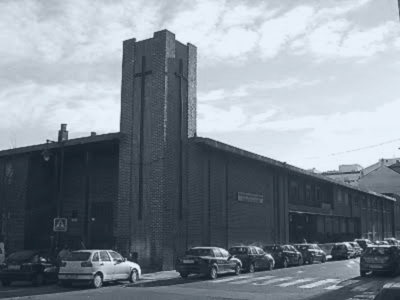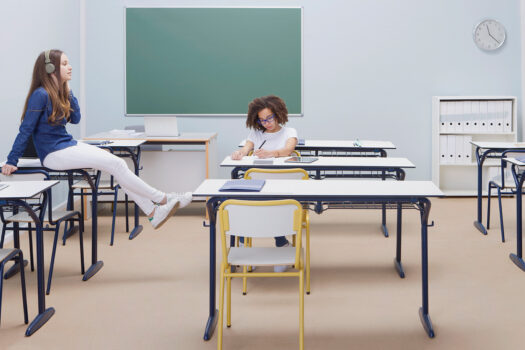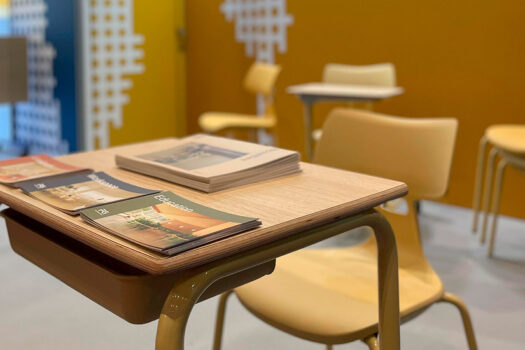Álvarez argues that teachers should promote skills and abilities aligned with modern times
Innovation and creativity are two of the values at the Colegio Sagrada Familia in Alcoy. Its director explains how they have integrated technology into all educational cycles.
Active methodologies, digital competence, digital identity, geolocation, augmented reality, science didactics, web 2.0 tools… These are terms and educational technologies increasingly implemented in the daily work of educational centers around the world.
One of these is the Colegio Sagrada Familia in Alcoy (Alicante), whose director, Juan Francisco Álvarez, holds a PhD in Educational Technology and a University Expert in Internet and its applications. In his opinion, technologies have created more effective ways of learning, and it is key that school furniture be dynamic and flexible to accommodate these devices and adapt to new educational proposals.

What would you say are the keys to education today?
Education today needs a change. Fortunately, that change is happening. The things that are being done well are consolidating, and more and more educators are becoming aware that another form of education is possible. Active methodologies are already present in many centers, giving prominence to those who truly deserve it: the students, who build their own learning under the supervision and guidance of the teachers. Roles are being assumed that are very different from what education has traditionally accustomed us to.
Similarly, new ways of assessing are emerging, and very necessary changes are being made to spaces and school furniture. However, there is still much to be done, and, also, why not admit it, many mistakes are being made; that, contrary to what it may seem, is a great opportunity to get up and keep learning.
How has the introduction of technology in the classroom changed the way of teaching?
Although there is still a small minority of teachers who shy away from technology or continue to use it for the same purposes, technology has created diverse ways of understanding education. Just as technology has changed society, customs, habits, etc., its introduction into education has made learning more effective.
With it, learning has become ubiquitous, collaborative, augmented, geolocated, formal-non-formal-informal, self-taught, etc. All this implies that teachers should worry more about making sure their students are competent in skills more aligned with modern times, and less about continuing to focus on skills that are no longer as necessary.
Why insist that our students memorize certain content that they can look up in seconds with a simple internet search? I don't mean to say that memorization of certain content shouldn't be worked on in school, but it is important to change the way we understand education and adapt it to these new times, with everything that this entails.
How has the experience been of applying these technologies at the Colegio Sagrada Familia in Alcoy?
In the past three years, we have introduced mobile devices in the classroom from Preschool to Primary and Secondary. The school has been equipped with good wifi infrastructure that allows all teachers and students to have an internet connection to connect wherever and whenever they want from any corner of the school.
Lastly, the teachers have been trained, and active methodologies are being applied in the school, ranging from thematic classrooms in Preschool to multiple intelligences and project-based work at all school levels. At first, it was quite tough for all parties involved (teachers, students, parents, etc.), but currently, seeing the progress this change has brought, we continue working enthusiastically to carry this project forward.
What kind of devices do you use, and how have they been integrated into the classrooms and daily work of students and teachers?
In Preschool, all classrooms are being equipped with tablets so students can interact with them in small groups. And all classrooms in this cycle have a digital whiteboard and a corner with a computer.
In Primary, a system under the BYOD (bring your own device) philosophy has been implemented, where each student brings their own tablet from home – with requirements to ensure it can be used equally. In each classroom, there is a digital whiteboard with a projector and computer.
In Secondary, the tablets introduced in Primary are being used, but we are considering the possibility of having, at least in 3rd and 4th year of Secondary, students bring their own laptops, so they can work with higher-performance devices, since at those ages, more can be done with these devices. For now, we are working with tablets and students' smartphones to carry out activities and proposals that connect mobile technology and active methodologies.
Can these technologies help foster new concepts, increasingly present in education, such as project-based work or multiple intelligences?
Not only do they contribute, but in many cases, these technologies are necessary and indispensable because they bring many benefits to achieving effective learning. That doesn’t mean we should not use them when they don't contribute anything. Knowing when to disconnect to reconnect, when it's necessary and beneficial for learning, is important.
In this regard, is progress being made towards personalized learning, which takes advantage of each student's qualities and abilities?
Of course. With these active methodologies, the use of technology, a new concept of time and space, and different roles for both teachers and students, learning is becoming increasingly tailored to each individual. This learning occurs by attending to each reality, pace, and need, and is done both autonomously and by leveraging the advantages of collaborative work, both among peers and with experts, guides, and advisors.
Creativity and innovation are qualities of your school. What can you tell us about all of this?
Working with active methodologies ensures that we are always involved in projects and various activities that, in addition to generating learning, foster creativity in our students. Many of these projects are interdisciplinary, multi-level (Preschool, Primary, and Secondary), and telecollaborative (with students from other schools in Spain or even abroad). This enhances the skills and abilities of each student and engages multiple intelligences, helping to bring out the best in each one of them.
All the competencies are applied in each activity we do. We are convinced that this is the direction education should take today, to form people of the present who will be able to navigate the future with ease.
What is the importance of furniture in configuring innovative classrooms? What should its qualities be?
School furniture is very important for redefining time and space, to make learning effective, and to ensure our students feel comfortable and at ease in the place where they spend most of their day. There is no better learning than the one that is done with enthusiasm, voluntarily, and without restrictions or obstacles. Traditional school furniture does not support this. It does not allow for effective group work, personal reflection, or classroom assemblies. Therefore, we must seek new spaces within or even outside the school that allow for such work: a corner under the stairs, hallways, small rooms, or large open spaces. The furniture in these spaces should meet at least two requirements: it must be dynamic and flexible. Dynamic so it can not only move but also group and separate as needed for each moment. Flexible so it can adapt to each student, each class, and each specific activity.
What real needs should this furniture respond to? What are the differences in these furniture needs when addressing different educational stages, such as Preschool, Primary, and Secondary?
In addition to being dynamic and flexible, the furniture should meet requirements related to aesthetics, functionality, and utility. It should also make the students feel comfortable. For example, what use is a very beautiful and colorful cabinet with fixed shelves if we cannot use it to store resources because they don't fit on the shelves?
In Preschool, we look for furniture that aligns with our way of working (thematic classrooms) and with the characteristics of students in this stage, considering height and functionality, as many activities are done on the floor. In the playroom, low shelves, open trunks, bean bags, and mats will also be needed.
In Secondary, taller furniture is needed that allows for movable and adaptable arrangements for both individual and group work. It may also be useful to have reconfigurable seating that can be arranged for assemblies, presentations, or turned into modules that serve individual purposes or a small group area for thinking, reflecting, etc.
Another necessary element is lockers and cabinets prepared to store mobile devices or laptops, with the possibility of having electrical outlets for charging these devices. It is an exciting but challenging task due to the varied needs and demands it presents. Lastly, both students and teachers need to feel comfortable working with this furniture.
Federico Giner is a Spanish company specializing in the design and manufacture of school furniture. Their products are designed to meet the evolving needs of education today. With a focus on comfort, practicality, and versatility, their collections, like Actiflex and DIDA, have been widely adopted in educational centers across Spain. Their innovative approach aims to bring more effective learning experiences by integrating flexible furniture solutions that can adapt to the changing dynamics of modern classrooms.



